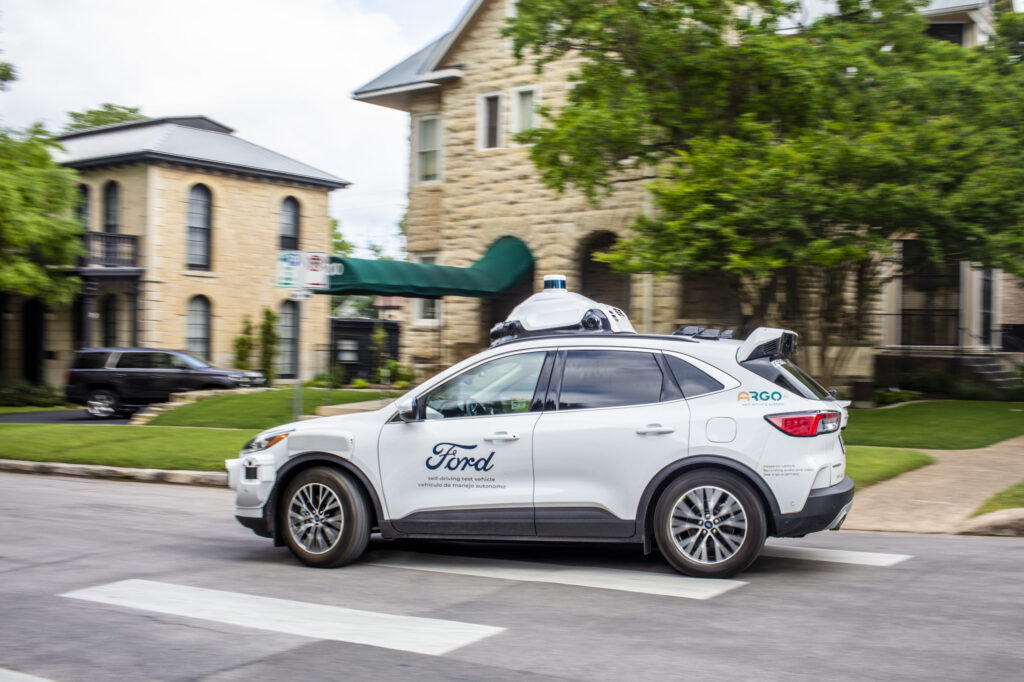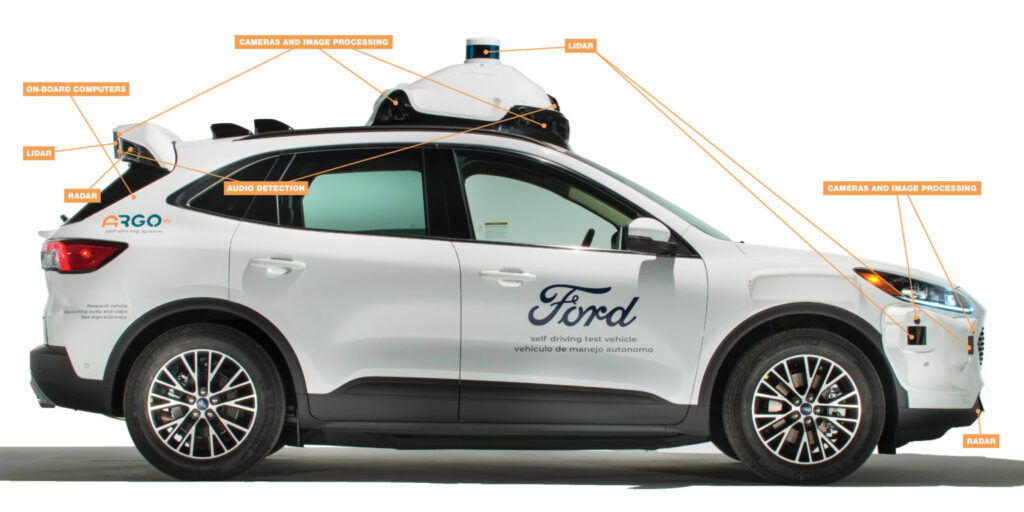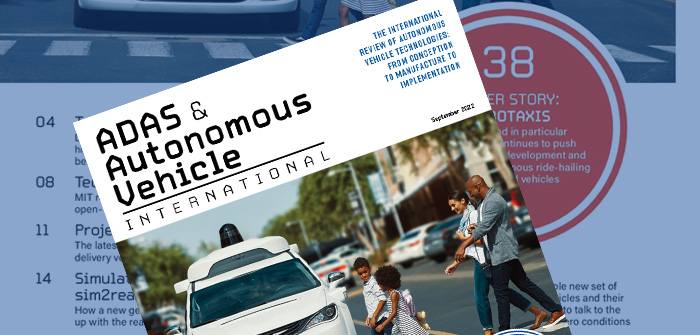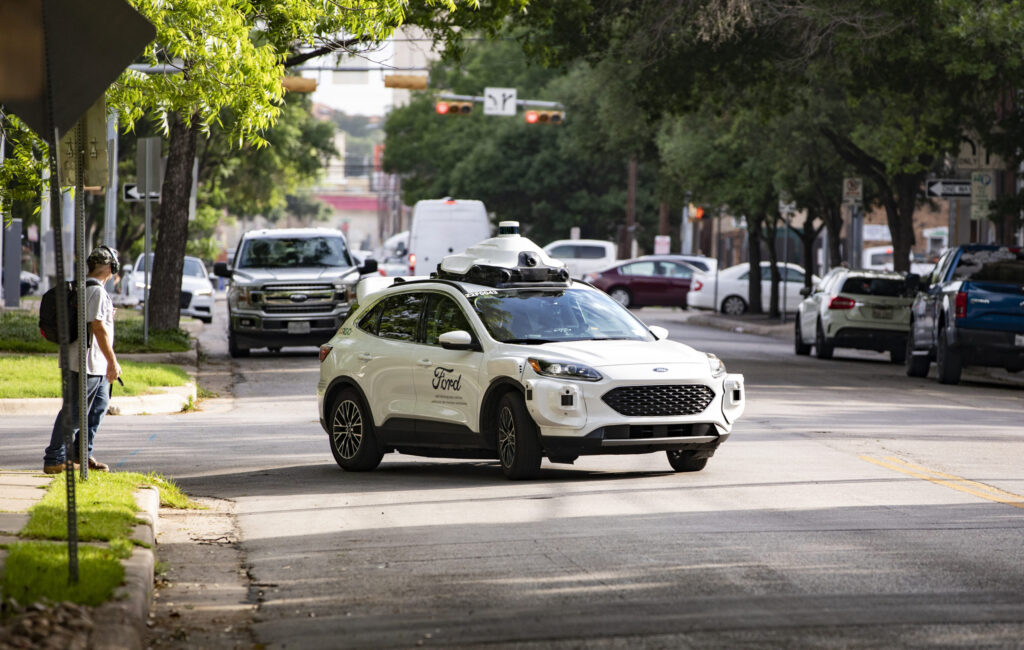 In its September issue, ADAS & Autonomous Vehicle International caught up with Brett Browning, EVP of product development and CTO at Argo AI, following the start of the company’s driverless rideshare operations in Florida and Texas.
In its September issue, ADAS & Autonomous Vehicle International caught up with Brett Browning, EVP of product development and CTO at Argo AI, following the start of the company’s driverless rideshare operations in Florida and Texas.
Please can you describe Argo AI.
Argo AI is a self-driving products and services platform company founded in 2016 in Pittsburgh, Pennsylvania. The company’s purpose is to reimagine the human journey with the mission to make the world’s streets and roadways safe, accessible and useful for all. Argo brings together self-driving technology, the operational footprint across multiple cities where demand for autonomous services is high, and the commercial partners needed to achieve a scalable autonomy business.
From day one, we established a business model where Argo develops the Autonomy Platform, which is designed to support multiple partner applications at scale. The Argo Autonomy Platform includes the software, hardware, HD maps and back-end support needed to power full-service self-driving operations at scale. To deliver the benefits of self-driving technology at scale, Argo partnered with Ford Motor Company in 2017 and Volkswagen Group in 2020 to tightly integrate Argo technology into their vehicles. And then we partner with companies like Lyft and Walmart to deploy our technology for rideshare and goods delivery services.
We operate in multiple cities across the USA and Germany in what we believe to be the largest urban testing footprint of any self-driving vehicle developer. We test in multiple cities because that’s where the most valuable miles are, where there is the population density and customer demand to create a compelling business case for autonomous ride hailing and goods delivery, and where there are a number of safety challenges, and traffic, congestion and a lack of transportation equity. By testing in multiple, diverse cities, we expose our technology to a wide range of real-world data that makes our self-driving system safer, smarter and more scalable.
Additionally, Argo works directly with cities and community stakeholders to build trust in self-driving technology. This ethos has taken many forms at the company, such as working with cycling advocacy group the League of American Bicyclists on technical guidelines designed to deliver safe interactions between autonomous vehicles and cyclists, and establishing community advisory boards in Miami and Austin. These activities are grounded in our desire to listen, learn and educate residents about Argo to pave the way for broader consumer and business adoption of autonomous services.
Argo is able to scale our technology because we have marshaled an extraordinary amount of data from diverse use cases and testing locations. We’ve focused on analyzing real-world experience from operating in the busiest neighborhoods of eight cities on two continents, facing complex traffic scenarios including unprotected turns and intersections with occlusions, cyclists and people walking outside crosswalks.
What are some of Argo’s most important milestones to date?
I’m so proud of our team for achieving driverless rides earlier this year. Argo began driverless operations in daytime traffic on public roads in Miami, Florida, and Austin, Texas, becoming the first AV developer on record to announce driverless operations in the heart of two major American cities at the same time. We also engaged with TÜV Süd, a world-leading certification body for safety in the autonomous vehicle industry, for a third-party assessment of our driverless operations.
Beginning in 2021, we also launched two autonomous vehicle services in Miami and Austin. We are currently conducting a goods delivery pilot program with Walmart and a ridesharing pilot program with Lyft. These partnerships also include integration with back-end cloud infrastructure to connect the Argo fleet with partners’ digital services for seamless interaction and customer engagement. We are gathering real-time experience from both pilots that are helping us to build a scalable AV business while also building out the product ecosystem so companies can seamlessly integrate Argo autonomous vehicles into their own existing services.

Why Austin and Miami for driverless rides?
We have been operating in Miami since 2018 and Austin since 2019. We have always focused on building operations in cities where autonomous vehicles will have a strong business and positive community impact, where there is supportive legislation for autonomous operations, and where community and business leaders welcome innovative technologies. Argo is testing on the streets of Miami and Miami Beach, where local driving habits and road infrastructure expose our system to a variety of driving behavior. The cities’ climate, road infrastructure and demand for rideshare and delivery services make Miami and Austin ideal for self-driving vehicles.
Our process is focused on balancing diversity of location with rigorous testing to deeply understand the details of each. Our intent is to dig deep into the expectations for road behavior in each city we select – hence our initial challenge in identifying the set of cities that would expose our vehicles to the widest-possible variety of interactions and behaviors, all while keeping safety top of mind.
Development and testing of the Argo Autonomy Platform in eight cities around the world enables the system to learn from a variety of common but challenging driving encounters, including interactions with cyclists, pedestrians and roadway construction, often at peak congestion times.
How do your vehicles sense and interpret the world around them?
Argo autonomous vehicles rely on a variety of sensors and systems to operate. Before we can even begin autonomous operations, we manually collect data and use our semi-automated tooling to create a three-dimensional map of each new operating area.
Our test vehicles then measure their position with GPS and onboard sensors – including cameras and lidar – against that map to figure out their location in the world with a high degree of accuracy. While operating autonomously, our test vehicles use sensors – with 360° view – and software to detect other road users and operate as safely as possible within the rules of the road.

How do you guarantee safety when there is no safety driver on board?
We have begun driverless operations in Austin and Miami, removing the safety driver from the driver’s seat. We have a dedicated fleet of vehicles that will be used for driverless testing operations, and are initially focused on conducting employee rides using our internally developed ride-hailing test app. We’re currently operating consumer-facing pilots with Lyft and Walmart with safety operators, and we’ll integrate driverless into commercial operations at the appropriate time.
To enhance safety when there is no safety driver on board, Argo uses a suite of sensors: lidar, radar and cameras. The key is redundancy. Lidar collects data quickly with a high degree of accuracy and works well in low- and high-level lighting conditions. This helps our system perform better in poor visibility conditions. In addition, lidar provides 3D depth information that allows our system to know the exact edges of objects around the car. To ensure we have an accurate view of the world, we combine lidar, camera and radar data to come away with a complete picture that utilizes the strengths of each sensor (‘sensor fusion’).
Safety of the vehicle is always maintained by the Argo Autonomy Platform. In a select group of conditions, when the self-driving system is unable to make a requisite decision or requires additional guidance to do so – such as an unexpected road closure or a vehicle blocking the exit from a customer pick-up point – our remote guidance capability provides human support to the self-driving system. A remote guidance operator will assess the event and issue guidance to the self-driving system. Although the operator can authorize the self-driving system to perform specific driving tasks it has recommended, remote guidance does not provide tele-operation to remotely drive the vehicle.
Finally, the self-driving system embraces a redundant computer design in which we have two independent computing systems that serve to maintain safe operations. The main computer, called the Autonomous Vehicle System (AVS), controls all of the self-driving software. Processing data coming from the sensors that constantly scan the road ahead and all around the vehicle, the AVS is what drives the vehicle, including performing emergency or evasive maneuvers, if necessary. There is also a separate computer called the Complementary Autonomous Vehicle System (CAVS). Running in parallel with the AVS and always active, the CAVS is designed to perform collision-mitigation functions if required, and to offer critical backup in case of a main system failure.
How has working with TÜV Süd enhanced safety?
Safety is our number-one priority. Therefore, in the preparation for driverless operations, we measured autonomy performance and safety requirements against industry best practices. Third-party validation is important to build trust with the communities in which we operate. TÜV Süd conducted a variety of assessments based on its Automated Vehicle Framework to prove that Argo met vehicle hazard, safety and operational requirements. TÜV Süd also visited Argo’s test track facilities in western Pennsylvania for on-site validation testing. This built on TÜV Süd’s audit of Argo in December 2021 to verify that Argo procedures pertaining to test driver selection, training and oversight procedures conform to the Automated Vehicle Safety Consortium’s (AVSC) best practices and SAE International’s J3018 standard for safe on-road testing.
TÜV Süd’s testing determined that Argo meets, and in some cases exceeds, industry best practices and standards as outlined by AVSC and SAE International’s J3018, citing Argo’s four-week Autonomous Vehicle System Test Specialist-certified training program as being compliant with these applicable standards.
What’s the future for lidar and how are you working to improve object detection?
At Argo, we believe lidar technology is essential for building self-driving cars that can safely operate on city streets and highways among other vehicles, pedestrians, bicyclists and other road users. Argo designed and developed its own long-range lidar in house, which has given the company a competitive edge in deploying self-driving cars in cities across the globe.
Argo Lidar gives Argo AI’s vehicles 360° visibility day and night to drive on busy city streets, in suburban neighborhoods and at highway speeds. This technology has long-distance sensing range capabilities of over 400m and can detect the smallest particle of light to sense objects with low reflectivity, such as black vehicles.
Argo is also working on advancing research in computer vision and machine learning. In 2019, Carnegie Mellon University (CMU) in Pennsylvania and Argo announced a five-year, US$15m sponsored research partnership and the establishment of the Carnegie Mellon University Argo AI Center for Autonomous Vehicle Research. Carnegie Mellon is the birthplace of autonomous vehicles (AVs) and has been a pioneering leader in AV technologies since the 1980s. The collaboration between CMU and Argo AI will support the development of advanced autonomous capabilities that will enable large-scale deployment of self-driving systems. The center focuses on fundamental research that will produce advanced perception and next-generation decision-making algorithms that enable vehicles to perceive and navigate autonomously in diverse real-world urban conditions. Argo also has research partnerships with Caltech, Georgia Tech, the Technical University of Munich and the University of Adelaide to advance research efforts.
This interview was first published in the September 2022 issue of ADAS & Autonomous Vehicle International – register for your free subscription, here.



